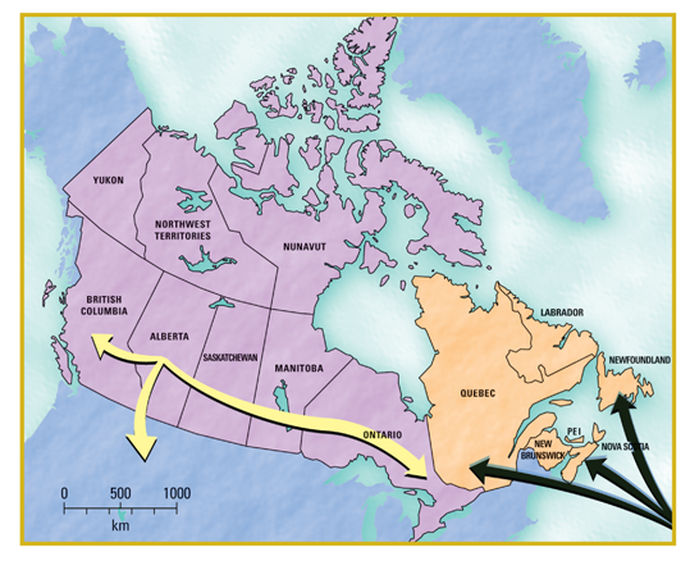Electricity is a vital component of modern society, and understanding the dynamics of its import and export can illuminate broader economic and environmental implications. In particular, the relationship between U.S. states and Canadian electricity supplies reveals a tapestry of energy interconnection that has evolved over decades. This article delves into the intricate web of electricity imports from Canada to various U.S. states, analyzing frequency, dependency, and the types of energy exchanged.
The United States and Canada share one of the longest international borders in the world, facilitating not only the physical transportation of goods but also the exchange of energy resources. The interconnected electricity grid has allowed states to bolster their energy security through diverse sources. Intriguingly, the frequency with which U.S. states import electricity from Canada varies significantly due to several factors, including regional demand, production capacities, and regulatory frameworks.
At the outset, it is invaluable to examine the electrical infrastructure that fosters this integration. The eastern and western regions of the U.S. have distinct interconnections with Canada. The eastern interconnection predominantly serves states like New York and Vermont, while the western interconnection encompasses states such as Washington and Montana. The geographical and infrastructural disparities result in varying levels of dependency on Canadian electricity imports.
Among the states that engage most frequently in electricity imports is New York. Through its robust network of high-voltage transmission lines that link to Ontario, New York imports a substantial portion of its electricity, particularly during peak demand periods. The province of Ontario has historically been a reliable supplier, providing hydropower from its numerous dams. During sweltering summer months or frigid winters, when electricity demand surges, New York often turns to Canadian imports to ensure grid stability and to mitigate the risk of blackouts.
Vermont, too, showcases a significant reliance on Canadian electricity. Due to its geographical proximity to Quebec, Vermont imports hydropower, which is revered for its sustainability and low carbon footprint. This strategic partnership not only helps Vermont meet its renewable energy goals but also reinforces inter-state diplomatic relations, emphasizing the broader implications of energy sharing.
Moving westward, Washington State represents another critical area of electricity importation from Canada. With access to vast hydroelectric resources, particularly from British Columbia, Washington engages in cross-border electricity trade. The Pacific Northwest’s hydropower capabilities play a pivotal role, particularly during dry seasons when local water levels dwindle. This seasonal variability exemplifies the interdependence of regional climates and energy needs across borders.
Another noteworthy aspect is the intricacies of regulatory environments that govern cross-border electricity trades. The Federal Energy Regulatory Commission (FERC) and its Canadian counterparts oversee policies overseeing interconnections and trade agreements. These agencies facilitate negotiations, ensuring fair practices and mutual benefit, but also delineate the lines that determine the frequency and volume of imports. The collaboration between these regulatory entities is crucial for fostering a resilient electricity trading infrastructure.
While various states engage in regular electricity imports, it is important to recognize the less frequent importation practices of other states. For instance, states like Idaho and Montana may import electricity intermittently, aligning their usage more closely with local production capabilities and fluctuating demand. Such states tend to rely more on their own substantial hydro and coal-generated electricity, demonstrating less dependency on foreign imports compared to their eastern counterparts.
Additionally, the type of energy imported from Canada varies, predominantly comprising hydropower, which contributes significantly to the overall mix in states like New York, Vermont, and Washington. The shift towards renewable resources is a cornerstone of contemporary energy policies, and Canadian hydroelectric power aligns seamlessly with the objectives of reducing greenhouse gas emissions and promoting sustainable practices. However, some states may also import electricity derived from fossil fuels or nuclear energy, depending on specific agreements and requirements.
Economic implications of these imports are multidimensional. For one, electricity imports from Canada can stabilize price volatility in the U.S., granting states access to reasonably priced energy. However, this relationship isn’t devoid of complexity; pricing structures for imported electricity may vary due to demand fluctuations, generating nuanced discussions on energy tariffs and cross-border trade agreements.
Moreover, the environmental ramifications warrant careful consideration. The globally recognized imperative to mitigate climate change drives some U.S. states to favor Canadian imports, particularly from clean sources. However, the carbon footprint associated with cross-border transportation of electricity must also be accounted for, prompting ongoing debates about the net environmental benefits of such transactions.
In conclusion, the frequency and nature of electricity imports from Canada to U.S. states encapsulate both the interdependence of regional energy markets and the broader ambitions of a sustainable future. As climate policies evolve and technological advancements reshape energy production and consumption paradigms, the electrical grid’s cross-border dynamics will continue to change. Thus, understanding these interactions is imperative not only for policymakers but also for stakeholders seeking to navigate the intricate landscape of energy economics and environmental stewardship.










